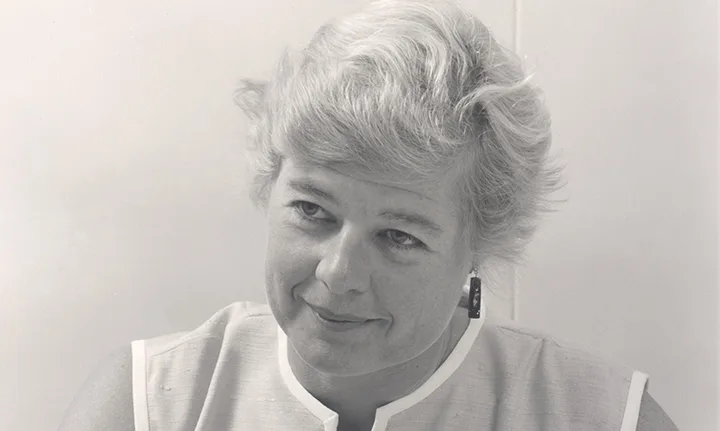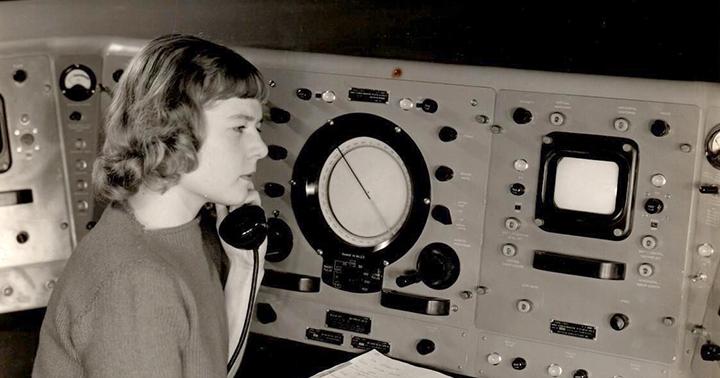If you haven’t heard of Virginia Norwood, it’s about time you did. An aerospace pioneer whose career would have been historic even without its undercurrent of triumph over misogynistic discrimination, she invented the Landsat satellite program that monitors the Earth’s surface today. Norwood passed away on March 27th at the age of 96, as reported by NASA and The New York Times.
She achieved all this despite significant pushback from the male-dominated industry before and after her rise. Despite her obvious talent, numerous employers declined to hire her after graduating from the Massachusetts Institute of Technology. For example, Sikorsky Aircraft told her they would never pay her requested salary, equivalent to the lowest rank in the civil service. Another food lab she applied for asked her to promise not to get pregnant as a condition of her employment. (She withdrew her application.) Finally, the gun manufacturer Remington appreciated her “brilliant” ideas in an interview but told her they were hiring a man instead.
Her career finally progressed after landing jobs with the US Army Signal Corps Laboratories (where she designed a radar reflector for weather balloons) and Sylvania Electronic Defense Labs (where she set up the company’s first antenna lab). Norwood began working in the 1950s as one of a small group of women at Hughes Aircraft Company, where she gained a reputation as a resourceful problem-solver. “She said, ‘I was kind of known as the person who could solve impossible problems,’” her daughter, Naomi Norwood, told NASA. “So people would bring things to her, even pieces of other projects.”

Hughes Aircraft / NASA
In the late 1960s, the director of the Geological Survey wanted to take photographs of the Earth from space to help manage land resources; partnering with NASA, a plan was hatched to send satellites into space. Then working on an advanced design team in Hughes’ space and communications division, Norwood formed the idea that would define her legacy. She gathered feedback from agriculture, meteorology and geology experts to develop a scanner to record different light and energy spectra. Although it used existing technology made for (lower-altitude) agricultural observations, she adapted the tech to meet the Geological Survey’s and NASA’s goals.
However, she faced numerous obstacles in securing a spot for her Multispectral Scanner System (MSS) on the launch satellite. It was already hauling an enormous three-camera system developed by RCA using television tube technology, which the agencies viewed as the primary imaging source. To get the MSS onboard, Norwood was tasked with scaling back its size to no more than 100 lbs, a significant downsizing; the RCA system took up most of the satellite’s 4,000 lb. payload.
She reduced the device to recording only four energy bands (down from its original seven) to ensure it would make the trip as a secondary measurement system. The satellite launched on July 23rd, 1972, and the MSS captured its first images — of Oklahoma’s Ouachita Mountains — two days later. The results exceeded all expectations, forcing a quick reevaluation of the satellite payload’s hierarchy. Norwood’s system performed better and was more reliable than the clunky RCA project, which caused power surges and had to be shut down for good two weeks into the mission.
Landsat quickly became the de facto method of surveying the Earth’s surface. Norwood continued to improve the system, leading the development of Landsat 2, 3, 4 and 5. Landsat 8 and 9, the current versions monitoring the effects of climate change today, are still based on her initial concept. Her other projects included leading the microwave group in Hughes Aircraft’s missile lab and designing the ground-control communications equipment for NASA’s Surveyor lunar lander.
She reportedly had no issue with the “the mother of Landsat” moniker her peers gave her. “Yes, I like it, and it’s apt,” she said. “I created it, I birthed it, and I fought for it.”
All products recommended by Engadget are selected by our editorial team, independent of our parent company. Some of our stories include affiliate links. If you buy something through one of these links, we may earn an affiliate commission. All prices are correct at the time of publishing.
Credit: Source link


Comments are closed.